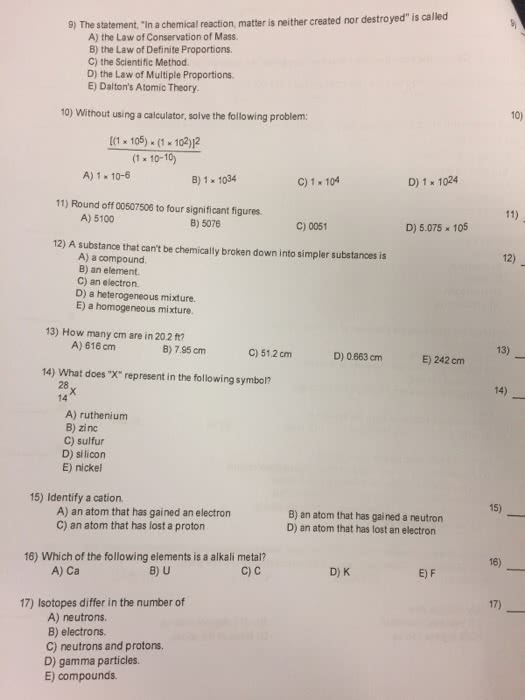CH-1010 Lecture 2: Chapter 2 Notes
Document Summary
Can"t be reduced by chemical means to a simpler substance e/m= -1. 758820 x 10-28 g. Charge: -1. 60 x 10-19 c (c is coulombs) For some compounds, smallest particle is a molecule. Give rise to chemical properties of an element. Small dense central core containing all + charge and most of the mass. 1 amu defined as 1/12 the mass of an atom that is composed of 6 protons, 6 neutrons, and 6 electrons. Amu= dalton (da)= unified atomic mass unit (u) Volume occupied by electrons is 100,000 that of the volume occupied by nucleus. Neutral atoms- identical counts of protons and electrons. Ions- formed when an atom loses or gains electrons. Cation- ion with positive charge (lose one or more electron) Anion- ion with negative charge (gained one or more electrons) Elements differ in the number of protons and electrons. # of protons in an element is the atomic number (z)



